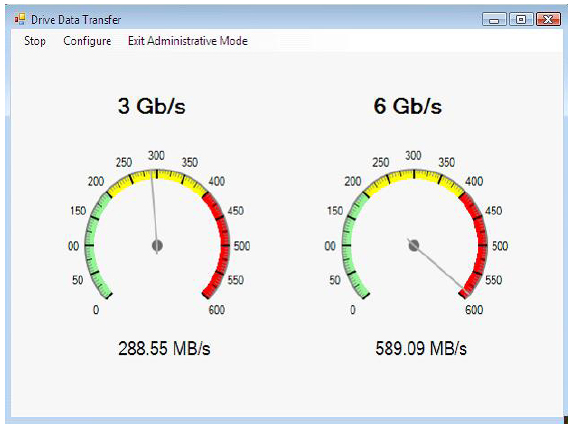Seagate demos 6Gbps hard-drive transfer speed

In collaboration with AMD, Seagate announced today its demonstration of a new hard drive Serial ATA interface, tentatively called SATA3, that offers speeds up to 6Gbps, or 600MBps.
Currently most consumer-grade computers use either the SATA or SATA2 interface that offers cap throughput speeds of 1.5Gbps and 3Gbps, respectively, or 150MBps and 300MBps.
(Because of software and hardware overhead, the actual speed of most SATA hard drives is still less than 200MBps.)
The new interface will increase maximum hard drive throughput speeds by 200 percent. SATA3, or SATA 6GB/second, was developed by the Serial ATA International Organization under the Serial ATA Revision 3.0 specifications.
The new interface will be backward compatible with the existing SATA and SATA2 interfaces and share the same cables and connectors. SATA3 also enhances power efficiency and improves native command queuing, an inherent features of SATA standard, to increase overall system performance and data transfer speeds.
SATA3 is still in the final phase of development, however, and there aren't any actual products yet. AMD said it would fully support the technology with a revision of its current 750 chipset and future chipsets.
Seagate, on the other hand, says you can expect the first SATA3-based hard drive by the end of the year:
Seagate and AMD are the first to demonstrate a complete implementation of 6 Gb SATA today in New Orleans. 3 Gb/sec SATA is standard today. 6 Gb/sec interfaces will ship on products in late 2009, none too soon for industry needs.
Why should you care?
1. Storage device throughputs (disk drives and SSD) are approaching the 3 Gb/sec SATA speed limit. For disk drives, it’s important for the external interface to be faster than the storage device. Otherwise, drives start to skip revolutions when reading and writing data. Skipped revolutions are like a sputtering car engine: they slow things down even further.
2. Interface speeds aren’t keeping up with capacity. It’s taking longer and longer to fill and empty a SATA drive. Anything that can be done to speed up the flow is valuable. The drive is the bottleneck, as it should be (see 1. above). Still, the interface speed has to be there as well.
6 Gb/sec SATA will get here just in time for hardcore PC users and gamers.
Seagate senior marketing I/O development manager Marc Noblitt says it's coming sooner than you think:
"Flash will take advantage [of the new interface], in applicable markets, sooner than you think," Noblitt said. "Six-gig is a perfect interface. OEMs tell us that they want to have the same SATA interface for flash as for a 1.8-inch rotating drive, so they can swap in a drive for flash, or vice versa."
